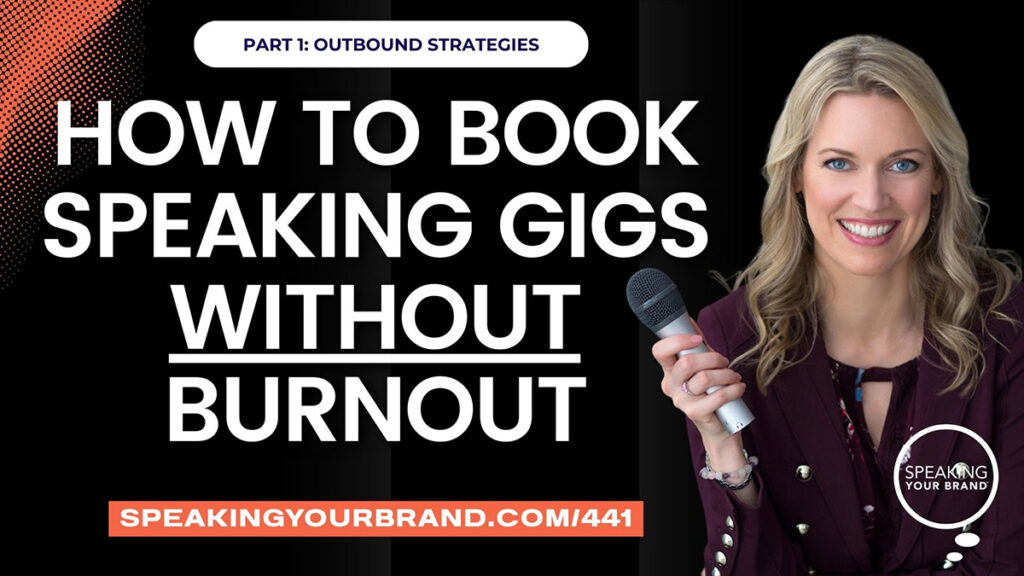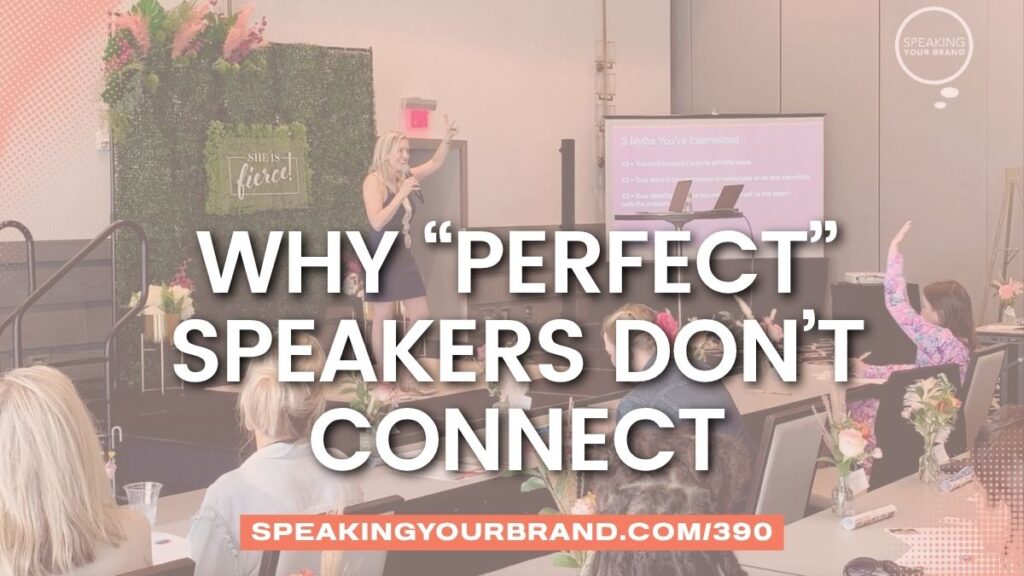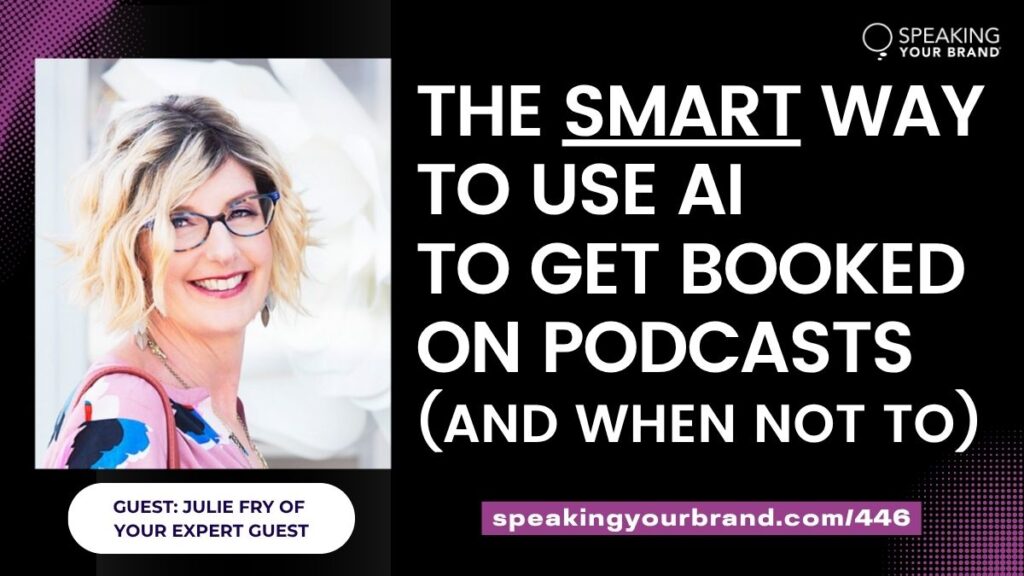441-SYB-Booked-Without-Burnout.mp3: this mp3 audio file was automatically transcribed by Sonix with the best speech-to-text algorithms. This transcript may contain errors.
Carol Cox:
Here’s how to consistently get more speaking engagements without burning out. On this episode of the Speaking Your Brand podcast. More and more women are making an impact by starting businesses, running for office, and speaking up for what matters. With my background as a TV political analyst, entrepreneur, and speaker, I interview and coach purpose driven women to shape their brands, grow their companies, and become recognized as influencers in their field. This is speaking your brand, your place to learn how to persuasively communicate your message to your audience. Hey there! Welcome to the Speaking Your Brand podcast. This is your host, Carol Cox. I want you to land more speaking engagements because you’re the messenger. Your audiences are waiting for now. It would be great if every speaking gig just magically landed in your email inbox or in our LinkedIn direct messages. You know, the ones that would say, I found you on a Google search or a LinkedIn search, and you’re exactly the speaker that we’re looking for, and we have a budget to pay you. Now, that sounds like magic, but it really does happen. It happens to me and it happens to our clients. So there are specific things you can do to make that more likely and to get more consistent and strategic with your pitching. Now, this is a two part series that we’re doing. We’re going to talk about how you can get more speaking engagements. This first episode right now is on what I call outbound activities. So this is where you’re doing outreach.
Carol Cox:
You’re actively pitching yourself. You’re reaching out to your network, you’re making connections, you’re going to events, you’re submitting speaking proposals for conferences, and so on. The next episode is going to be on what I call inbound activities. Setting yourself up so that speaking engagements come to you. So you get those emails in your inbox or those messages on social media. You need to be doing both outbound and inbound. So don’t skip this episode on the outbound because they work together. Now, I titled this episode Booked Without Burnout, because I know it can feel hard to add one more task to your already busy schedule. You’re already doing sales and marketing. You’re working with your clients. Perhaps you’re also going to events, and so you feel like you just don’t have the time to add searching for events to pitch to and actually speaking proposals. But I’m going to help you in this episode to find the time and to remember why it’s so important to do so. Burnout happens because either you’re not excited by what you’re doing, or you feel like your efforts aren’t producing results, or you’re spending too much time on things that feel rote or monotonous. So that’s where I believe a lot of this idea of feeling burnt out, just kind of pitching yourself and not getting the results that you want. So we’re going to narrow down on the strategies that work. I know pitching can feel intimidating. And sometimes that’s where this idea, oh, I just don’t have enough time to do it is coming from you might be afraid of rejection, of putting yourself out there and being told no, or you might feel like you’re not ready yet.
Carol Cox:
But event organizers need speakers and they need great speakers like you. You’re solving a problem for them by delivering excellent content and excellent value to their audience, so just keep that in mind. Let’s get specific with the strategies I’m going to share with you three ways to not only find time to pitch, but to make it a sustainable and even enjoyable part of your weekly routine without feeling burnt out by it. Here’s strategy number one schedule your pitch Power Hour on your calendar and make it a recurring time every single week. Maybe it’s Friday morning. Maybe it’s Monday afternoon, whatever it happens to be. Put it on your calendar. You can pause this podcast right now. Go put it on your calendar. Even if it’s just for this week. And then go back later and find what the recurring time could be, because instead of vaguely telling yourself, yeah, I should pitch more, I should find time to do it. Or maybe I’ll have time this week to do it. Putting it on the calendar makes it actually happen. I schedule pretty much my entire life and my business on my Google calendar. If it’s not on the Google Calendar, it basically does not exist to me. So I have a time blocked off on Fridays for an hour where I do my own speaking, outreach, and pitching.
Carol Cox:
Think of it like a standing meeting, not just with your present self, but with your future self. The one who now has that amazing speaking engagement. The one who’s connecting with event organizers. The one who’s getting referrals to other speaking invitations, the one who’s growing her thought leadership platform and her personal brand and her business. Your future self is going to thank you for putting that hour in every single week. Now, during that pitch power hour, here’s what you can focus on. So number one, do about 15 to 20 minutes of research to find speaking opportunities that align with your business, your topic, your industry, the audiences that you’re looking for, and to find these speaking opportunities. Of course Google search is great. You can put in your industry or associations or topics or audiences. You can also use perplexity. My perplexity is cool. It’s like ChatGPT meets Google search, so it’s both of them combined into one. You can put in a search term like, I’m looking for women’s leadership conferences that are coming up in 2026 and then see what comes back, and then you can narrow it also by geographic area. You can also get much more specific with a particular industry as well. The other thing you can do is set up Google alerts. So that way every time there’s some type of article or press release or something related to a conference for your specific topic, then Google will send that to your inbox so you can save those and then go back through those during your pitch power hour.
Carol Cox:
The second thing I want you to do is to submit 1 or 2 pitches to these conferences that you just found in your research, and you can customize your pitch based on that particular event or conference, whatever their theme is, the type of audience, the level that they’re at based on your topic. And here’s what’s so great is that you can have ChatGPT or whatever AI chatbot that you like to use help you with this. I’ll go to the conferences website and either print to PDF, their home page, or their call for speakers page. If the call for speakers page has a lot of good information about the conference and what they’re looking for, say, the tracks and the theme. In my browser, I’ll print to a PDF, and then I’ll go to ChatGPT and I’ll upload that PDF of the web page, and I’ll have ChatGPT customize my speaking proposal based on that specific conference. So that way we’ll pull in the themes, or we’ll slightly adjust my topic and my pitch based on what that conference is looking for. This is one of the things that we teach our clients how to do in our Thought Leader Academy and our Business of Speaking module, they identify different conferences and events that they can pitch to, and then we work together in ChatGPT to customize their proposal so they see exactly how it works, and then they can do it from there on out.
Carol Cox:
So again, for the pitch power hour, you’re going to spend the first 15, 20 minutes or so doing that research, and then you get to spend the rest of the time customizing your speaking proposals so that you can submit 1 or 2 of them. You may end up even doing this in less than an hour. Maybe it only takes you 30 minutes, which is great. So imagine that you’re doing this every single week. So that’s four per month pitches that you’re doing at least four per month. And let’s say that’s about 40 to 50 per year. Now, you may not get to that many of them, but imagine that you are that consistent and you’re putting in. Let’s just even say it’s 30 to 40 per year. That’s amazing because not only are you putting yourself out there, but something is going to open up from those different proposals that you’re putting out there. So that’s how those speaking opportunities are going to start coming to you. So that’s strategy number one. Make sure to set aside that pitch power hour every week on your calendar. Strategy number two is to focus in your local community. This is especially important when you need to get on the speaking circuit. You want to get more photos and video clips that you can put on your website and on your social media. You need to build relationships with event organizers so that they know that you’re a speaker, and that they can refer you to other events that are coming up.
Carol Cox:
So pick three organizations or groups that you’re genuinely interested in getting to know the people and eventually in speaking to. This could be a women’s business group in your city, a chamber of commerce, a professional association, a coworking space, an industry specific conference, anything like that. So identify three of those. There may be some that you already are a part of. Go to their monthly events or their regular meetings. Get to know the event organizers. Get to know the other members, so then you can connect with them on LinkedIn. Once you’ve made these initial relationships, then you can let them know that you’re a speaker and that you have a particular topic that you think would be a good match for their audience or for their members. And it would be authentic, because now you’ve gotten to know them, and you’ve gotten to get a sense of what their members are looking for. So you have that relationship and you have relevance backing you up versus just a copy paste pitch that so many other people send. Just a few months ago. I did exactly this. There was a local meetup group that had just started around AI, so I attended their event in April. They had just started in March and I found out about it after their first meeting. So I went to the one in April. After they were finished with the presentation, I introduced myself to the event organizer, told her how excited I was that she had started this new AI meetup group in Orlando, and that I would be happy to be a speaker at one of her future events because I was working on AI in within my business and she said, oh well, I’m so glad you said that, because next month for May, I just found out today that our speaker can’t make it because he has to go out of town for that week.
Carol Cox:
So I needed a speaker. Would you like to do it? And I said yes. So you never know when that will happen. And so I ended up presenting at the May meetup to a packed room. It was so much fun. It was one of my favorite presentations that I’ve ever given. And that all happened because I showed up. So that really is strategy number two is show up. Show up in your local community, find those business groups, meetups, coworking spaces, industry specific associations, whatever it happens to be, start attending their meetings, getting to know the event organizers, talk to them, and just let them know that you’re happy to speak at one of their future events. Strategy number three is to align your pitching to your existing visibility efforts. So what do I mean by that? If you already are sending out an email newsletter to your list, you’re probably already posting on social media like LinkedIn. Or maybe you’re publishing blog posts, or you have a podcast.
Carol Cox:
You’re already creating visibility content. So now pair that with your pitching strategy. For example, in your email newsletter, you can have a section where you mention a recent speaking engagement that you did or a podcast interview that you were on. That way, you’re letting your readers know that you are a speaker or you’re a podcast guest on those particular topics. Same with LinkedIn. Every time you have a speaking engagement or a podcast interview, post about it on LinkedIn. Photos are great because people love to see photos. If you have a video clip, you can do that as well. A lot of times we assume that people know that we’re a speaker or people know what topics we speak about, but they’re not necessarily going to know unless we tell them. So tell them in your email newsletter. Make sure you have a speaking page on your website in your LinkedIn profile under the about section. Talk about the speaking that you do and the topics that you speak about. Post on LinkedIn once in a while, some of your speaking topics and of course speaking engagements that you’ve done. So here’s the secret. Or not really so much of a secret to making speaking a habit. It really comes down to planning and consistency. What if you spent that one hour a week, that pitch power hour planting seeds and the rooms and communities where your name needs to be heard, where your audiences are waiting for you? What might those seeds grow to in three months, six months, and a year from now? Now more than ever, your voice and your perspective are needed in these rooms.
Carol Cox:
So instead of saying, I just can’t find time to pitch myself, instead start asking, what’s one step I can take this week toward putting myself in the room where my ideas belong? You never know who is waiting to hear you speak, so I’m going to leave you with this final call to action. Write down five events you love to speak at and focus locally. In addition, maybe some that are not too far away. Maybe there’s one bigger conference that you would like to speak at Up and write down five people who might be connected to those events and send just one email this week. So of those five events and of those five people, send one email. That’s it. Just that one email. Get the ball rolling. Let’s get the momentum started. If you’d like to work with us on creating your signature talk and landing speaking gigs, join us in our online Thought Leader Academy program or attend our one day in-person Speaking Accelerator workshop in Orlando, Florida. You can find all the details under the work with US navigation at Speaking your Brand.com. Be sure to stay tuned for part two in the next episode, where I’m going to share strategies for getting inbound speaking invitations, the ones that land in your lap. Click to follow the podcast on Apple Podcasts or Spotify. Until next time, thanks for listening.
Sonix has many features that you’d love including secure transcription and file storage, transcribe multiple languages, automated translation, automatic transcription software, and easily transcribe your Zoom meetings. Try Sonix for free today.







